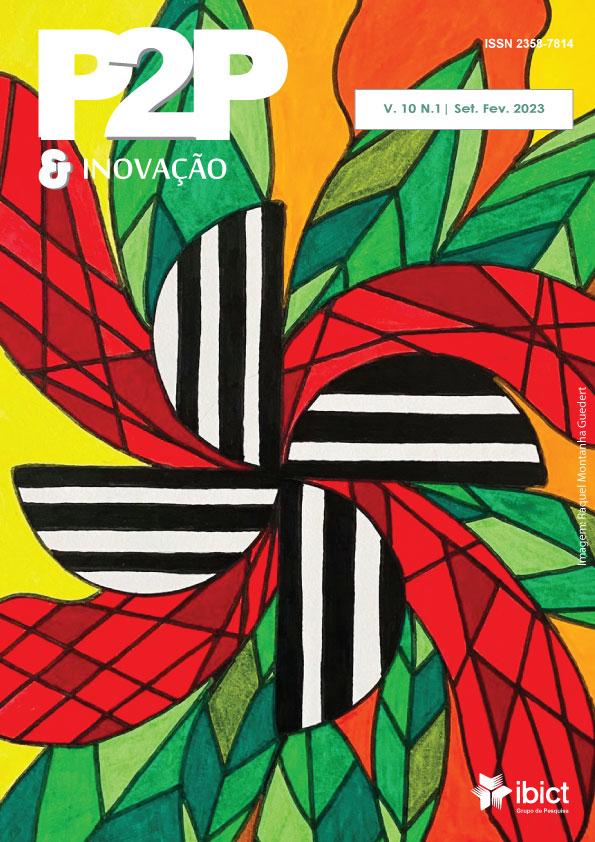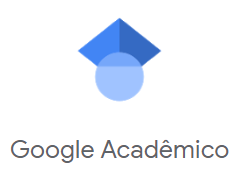INTELIGÊNCIA ARTIFICIAL
um estudo sob a perspectiva da proteção patentária
DOI:
https://doi.org/10.21728/p2p.2023v10n1.p226-247Palavras-chave:
Inteligência Artificial, Direito, Propriedade Intelectual, PatentesResumo
A Inteligência Artificial – IA pode ser definida como o estudo de agentes computacionais inteligentes que recebem percepções do ambiente e executam ações, bem como tomam decisões autônomas. Na contemporaneidade, esse mecanismo é aplicado em diversos segmentos, desde o agronegócio até os serviços relacionados à saúde. Ademais, em consonância às recentes pesquisas, a utilização da IA, em nível mundial, cresce consideravelmente. Posto isto, este estudo se configura em natureza exploratória, com auxílio de pesquisa documental, a partir do acesso à base de dados de patentes inglesa Questel Orbit Intelligence. Nesse contexto, por meio da metodologia PRISMA, identificaram-se 87.959 patentes depositadas sobre o tema, em âmbito mundial, entre os anos 2003 e 2022. Ademais, há um crescimento acentuado de depósitos de patentes de IA a partir de 2015. Notou-se, também, a China como propulsora internacional no desenvolvimento dessa tecnologia, principal nação depositante. Diante disso, constatou-se que a publicação de patentes de IA acompanha o progresso exponencial de tal tecnologia, levando em consideração os aspectos de proteção de propriedade intelectual e de segurança jurídica, o que possibilita vantagens competitivas frente aos concorrentes, obtidas por intermédio do direito à concessão de patentes.
Downloads
Referências
ABPI, Associação Brasileira da Propriedade Intelectual. Propriedade Intelectual e desenvolvimento no Brasil. BUAINAIN, Antônio Márcio, SOUZA, Roney Fraga (Org.). Rio de Janeiro: Ideia D.; ABPI, 2019.
ARAÚJO, Wecio Pinheiro. Marx e a indústria 4.0: trabalho, tecnologia e valor na era digital. R. Katál., Florianópolis, v.25, n. 1, p. 22-32, jan./abr, 2021. DOI: 10.1590/1982-0259.2022.e82591.
ARBIX, Glauco. Algoritmos não são inteligentes nem têm ética, nós temos: a transparência no centro da construção de uma IA ética. In: COZMAN, Fabio G.; PLONSKI, Guilherme Ary; NERI, Hugo (Org.). Inteligência artificial: avanços e tendências. São Paulo: Instituto de Estudos Avançados, 2021.
BOCCHINO, Leslie de Oliveira; et al. Propriedade Intelectual: conceitos e procedimentos. Brasília: Advocacia-Geral da União - AGU, 2010. 316 p.
BRASIL. Constituição da República Federativa do Brasil de 1988. Disponível em: <http://www.planalto.gov.br/ccivil_03/constituicao/constituicao.htm>. Acesso em: 20 jan. 2023.
BRASIL. Lei nº 9.279, de 14 de maio de 1996. Regula direitos e obrigações relativos à propriedade industrial. Disponível em: < http://www.planalto.gov.br/ccivil_03/leis/l9279.htm>. Acesso em: 20 jan. 2023.
BRKAN, Maja. Do algorithms rule the world? Algorithmic decision-making and data protection in the framework of the GDPR and beyond. International Journal of Law and Information Technology, 2019, 0, 1–31. DOI: 10.1093/ijlit/eay017.
CARVALHO, André Carlos Ponce de Leon Ferreira. Inteligência Artificial: riscos, benefícios e uso responsável. Estudos Avançados, v. 35 (101), 2021. DOI: 10.1590/s0103-4014.2021.35101.003.
CORDEIRO, Veridiana Domingos. Novas questões para sociologia contemporânea: os impactos da Inteligência Artificial e dos algoritmos nas relações sociais. In: COZMAN, Fabio G.; PLONSKI, Guilherme Ary; NERI, Hugo (Org.). Inteligência artificial: avanços e tendências. São Paulo: Instituto de Estudos Avançados, 2021.
COSTA, Lucas; et al. Determining leaf stomatal properties in citrus trees utilizing machine vision and artifcial intelligence. Precision Agriculture, 22, 2021. DOI: 10.1007/s11119-020-09771-x.
COZMAN, Fabio G.; NERI, Hugo. O que, afinal, é Inteligência Artificial? In: COZMAN, Fabio G.; PLONSKI, Guilherme Ary; NERI, Hugo (Org.). Inteligência artificial: avanços e tendências. São Paulo: Instituto de Estudos Avançados, 2021.
DAVIES, Colin R. An evolutionary step in intellectual property rights e Artificial intelligence and intellectual property. Computer Law & Security Review, 27, 2011, 601 e 619 p. DOI: 10.1016/j.clsr.2011.09.006.
DONG, Yuanyuan; et al. The Impact of R&D Intensity on the Innovation Performance of Artificial Intelligence Enterprises- Based on the Moderating Effect of Patent Portfolio. Sustainability, 2021, 13, 328. DOI: 10.3390/su13010328.
DURÃES, M. G.; ANDADE, M. T. S.; TOGNETTI, S. O Histórico Controverso da Proteção à Propriedade Intelectual e seu Impacto sobre o Desenvolvimento Nacional: Aspectos da Desigualdade entre os Países do Eixo Norte/Sul. PIDCC, Aracaju, ano II, edição n. 04/2013, p. 228-252, out., 2013.
FLASINSKI, Mariusz. Introduction to Artificial Intelligence. Kraków, Poland: Springer, 2016.
GOMES, Dennis dos Santos. Inteligência Artificial: Conceitos e Aplicações. Revista Olhar Científico. V. 01, n.2, Ago./Dez. 2010.
GUNKEL, David J. Comunicação e inteligência artificial: novos desafios e oportunidades para a pesquisa em comunicação. Galaxia, n. 34, jan-abr., 2017, p. 05-19. DOI: 10.1590/1982-2554201730816.
HORI, Takeo; YAMAGAMI, Hiroaki. Intellectual property rights protection in the presence of exhaustible resources. Environ Econ Policy Stud, 2018. DOI: 10.1007/s10018-018-0214-0.
INPI, Instituto Nacional da Propriedade Industrial. Classificação Internacional de Patentes (IPC). Rio de Janeiro, 2020. Disponível em: < http://ipc.inpi.gov.br/classifications/ipc/ipcpub/media/help/pt/guide.pdf>. Acesso em: 20 jan. 2023.
INPI, Instituto Nacional da Propriedade Industrial. Tratado de Cooperação em matéria de Patentes (PCT). Rio de Janeiro, 2021. Disponível em: < https://www.gov.br/inpi/pt-br/servicos/patentes/Como-proteger-patente-no-exterior/pct/tratado-de-cooperacao-em-materia-de-patentes-pct>. Acesso em: 20 jan. 2023.
INPI, Instituto Nacional da Propriedade Industrial. Busca de patentes. Disponível em: < https://www.gov.br/inpi/pt-br/servicos/patentes/guia-basico/busca-de-patentes#:~:text=De%20acordo%20com%20a%20Organiza%C3%A7%C3%A3o%20Mundial%20da%20Propriedade,de%201%2C2%20milh%C3%B5es%20de%20patentes%20concedidas%20por%20ano.>. Acesso em: 20 jan. 2023.
JOHNS, Adrian. Intellectual Property and the Nature of Science. Cultural Studies, 20:2-3, 145-164, 2006. DOI: 10.1080/09502380500495643.
KEISNER, C. Andrew; RAFFO, Julio; WUNSCH-VINCENT, Sacha. Breakthrough technologies: Robotics, innovation and intellectual property. Economic Research Working / World Intellectual Property Organization, Paper nº. 30, 2015.
LEE, Mekyung. An analysis of the effects of artificial intelligence on electric vehicle technology innovation using patent data. World Patent Information, 63, 2020, 102002. DOI: 10.1016/j.wpi.2020.102002.
LEUSIN, Matheus Eduardo; et al. Patenting patterns in Artificial Intelligence: Identifying national and international breeding grounds. World Patent Information, 62, 2020, 101988. DOI: 10.1016/j.wpi.2020.101988.
LUGER, George F. Inteligência Artificial: estruturas e estratégias para a solução de problemas complexos. Tradução: ENGEL, Paulo Martins. 4ª Ed. Porto Alegre: Bookman, 2004.
MACEDO, M.F.G.; BARBOSA, A.L.F. Patentes, pesquisa & desenvolvimento: um manual de propriedade intelectual [online]. Rio de Janeiro: Editora FIOCRUZ, 2000. 164 p. ISBN 85-85676-78-7. Available from SciELO Books <http://books.scielo.org>.
MEDEIROS, Cassandra Carneiro. O Papel do INPI no Processo de Institucionalização da Propriedade Industrial no Brasil. 2020. Dissertação de Mestrado - Pós-Graduação em Propriedade Intelectual e Transferência de Tecnologia para Inovação, Universidade Federal do Paraná, 2020.
MOSER, Petra. Patents and Innovation in Economic History. Annu. Rev. Econ. 2016. 8:241–58. DOI: 10.1146/annurev-economics-080315-015136.
NORTH D.C.; THOMAS R.P. The Rise of the Western World: A New Economic History. Cambridge, UK: Cambridge Univ. Press, 1973.
OECD, Organisation for Economic Cooperation and Development. Manual e Oslo: proposta de diretrizes para coleta e interpretação de dados sobre inovação tecnológica. (1997). Tradução: Financiadora de Estudos e Projetos. Brasília: FINEP, 2004. Disponível em: <http://www.finep.gov.br/images/a-finep/biblioteca/manual_de_oslo.pdf>. Acesso em: 20 jan. 2023.
PALSULE, Siddhesh; MISHRA, Sandeep. Computer Vision Market Analysis and Segment Forecasts to 2028. Grand View Research, 2020.
PEUKERT, Alexander. Intellectual property and development: narratives and their empirical validity. J World Intellect Prop. 2017; 9999:1–22. DOI: 10.1111/jwip.12072.
PWC. Explainable AI: Driving business value through greater understanding. PwC, 2018. Disponível em: < https://www.pwc.co.uk/audit-assurance/assets/explainable-ai.pdf>. Acesso em: 6 jan. 2023.
QUESTEL. Orbit Intelligence. Disponível em: < https://www.questel.com/orbit-software-suite/orbit-intelligence/>. Acesso em: 02 jan. 2023.
QUINTINO, Heliana Mary da Silva. World efficiency in the potential production of new technologies under intellectual property assets. Technology in Society, 65, 2021, 101601. DOI: 10.1016/j.techsoc.2021.10160.
RAGOT, Sebastien; REY, Antje; SHAFAI, Ramin. IP lifecycle management using blockchain and machine learning: Application to 3D printing datafiles. World Patent Information, 62, 2020, 101966. DOI: 10.1016/j.wpi.2020.101966.
ROGERS, David L. Transformação Digital. Tradução: Afonso Celso. 1. Ed. São Paulo: Autêntica Business, 2020.
RUSSELL, Stuart J.; NORVIG, Peter. Inteligência Artificial. 3ª Ed. Tradução: SIMILLE, Regina Célia. Rio de Janeiro: Elsevier, 2013.
RUSSELL, Stuart J.; NORVIG, Peter. Inteligência Artificial. 4ª Ed. Hoboken: Pearson, 2021.
SANTOS, Wagna Piler Carvalho; SARTORI, Rejane. Introdução e Evolução Histórica da Propriedade Intelectual. In: SANTOS, Wagna Piler Carvalho (Org.). Propriedade intelectual. Salvador: IFBA, 2019. 532 p. (PROFNIT, Conceitos e aplicações de propriedade intelectual; V. 2).
SCHWAB, Klau. A quarta revolução industrial. Tradução: MIRANDA, Daniel Moreira. São Paulo: Edipro, 2016. Título original: The Fourth Industrial Revolution. ISBN 978-85-7283-978-5.
SONKA, Milan; HLAVÁČ, Vaclav; BOYLE, Roger. Image Processing, Analysis, and Machine Vision. 4ª Ed. Stamford, USA: Cengage Learning, 2014.
SPERANDIO, H. Desafios da inteligência artificial para a profissão jurídica. Dissertação de Mestrado em Direito – Fundação Getúlio Vargas, 2018. Disponível em: <https://direitosp.fgv.br/publicacoes/desafios-inteligencia-artificial-para profissao-juridica>. Acesso em: 20 jan. 2023.
TAULLI, Tom. Artificial Intelligence Basics: a non-technical introduction. Monrovia, USA: Apress, 2019.
TEIXEIRA, João de Fernandes. O que é inteligência artificial. Porto Alegre: Editora Fi, 2017.
ZORZETTO, Bruno; NUNES, Maria Augusta Silveira Netto. Technological Prospection For Use of Computer’s Network Intelligent Agents. Rev. GEINTEC. São Cristóvão/SE, 2013. Vol. 3/n.3/ p.161-167. DOI: 10.7198/S2237-07222013000300016.
Publicado
Edição
Seção
Licença
Copyright (c) 2023 Bruno Vicente Nunes de Oliveira, Filipe Torres de Melo

Este trabalho está licenciado sob uma licença Creative Commons Attribution-NonCommercial-ShareAlike 4.0 International License.
A revista é publicada sob a licença Creative Commons - Atribuição - Uso Não Comercial - Partilha nos Mesmos Termos 4.0 Internacional.
O trabalho publicado é considerado colaboração e, portanto, o autor não receberá qualquer remuneração para tal, bem como nada lhe será cobrado em troca para a publicação.
Os textos são de responsabilidade de seus autores.
É permitida a reprodução total ou parcial dos textos da revista, desde que citada a fonte.














